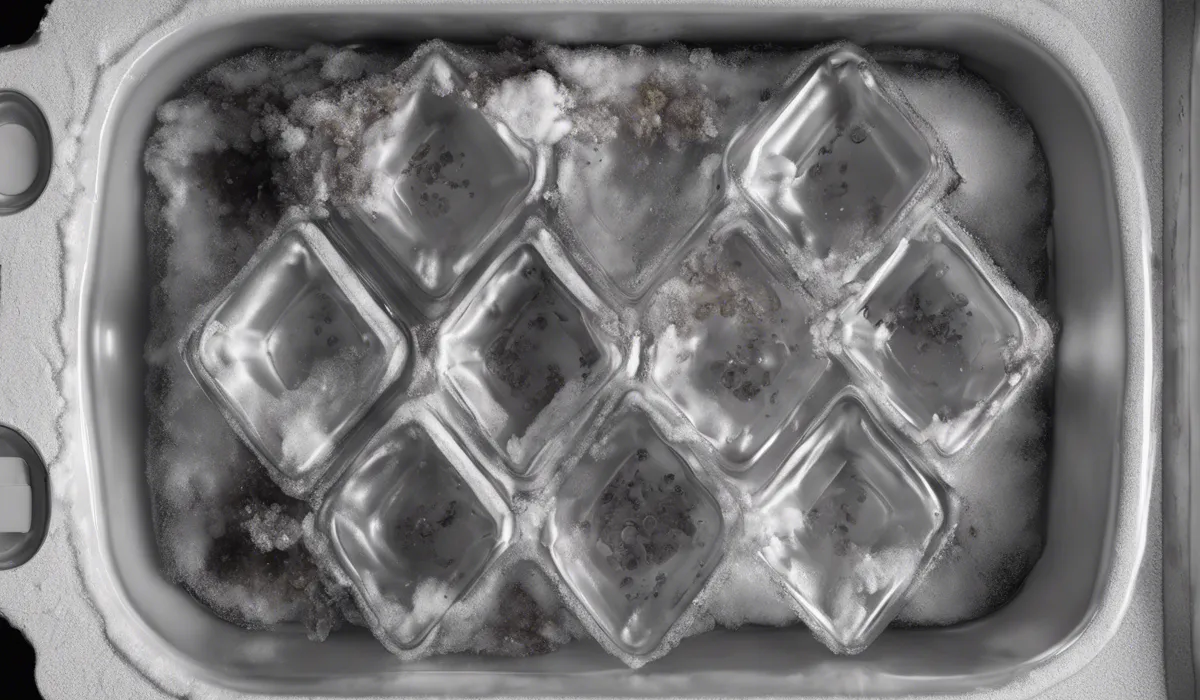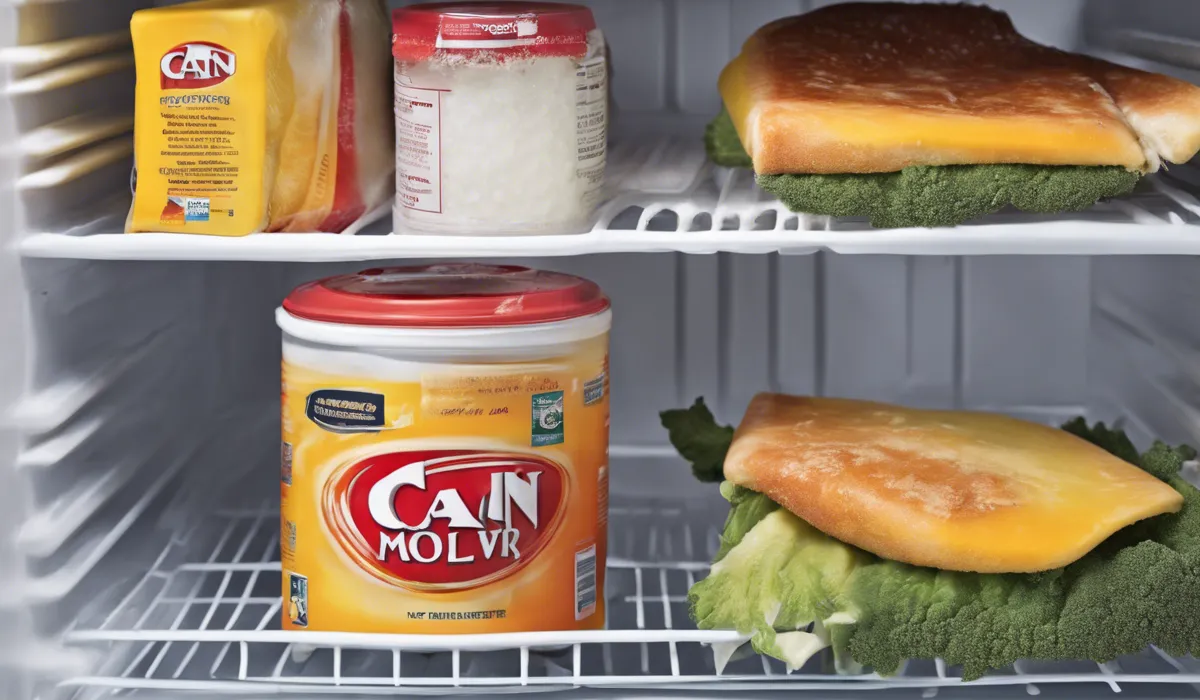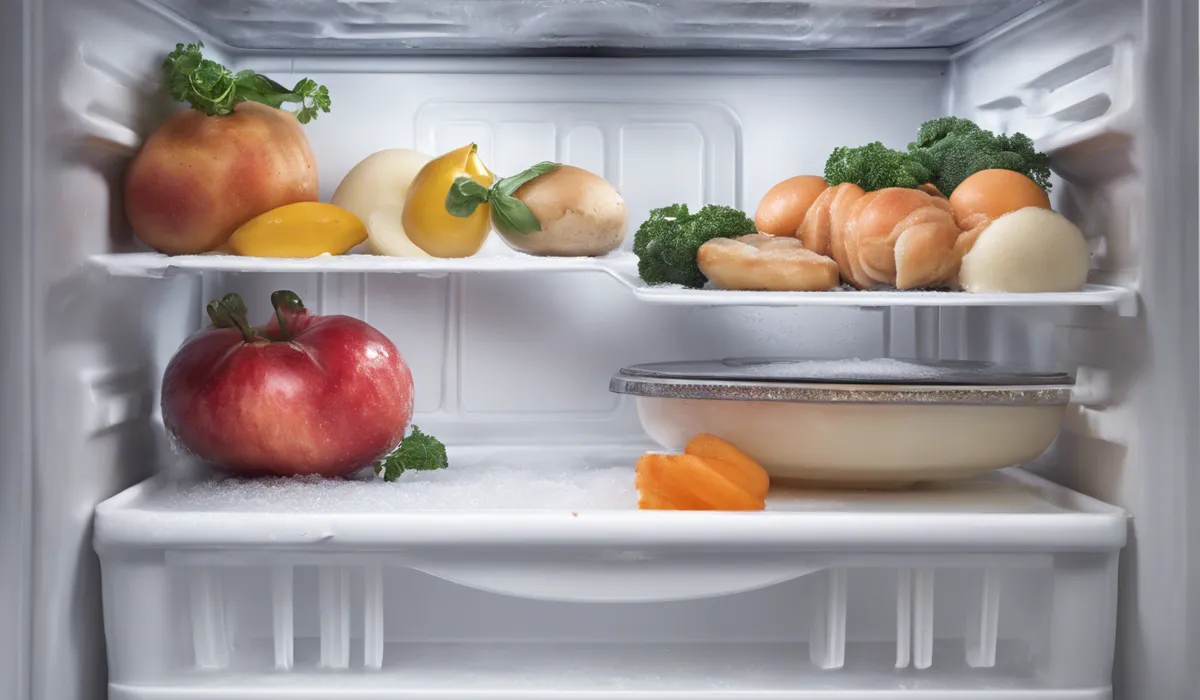Mold can grow in the freezer if there are spores present and conditions such as fluctuating temperatures and exposed food particles. However, the extreme cold usually inhibits mold growth, making it a less common occurrence.
Understanding Mold and Cold Environments

Definition of Mold
Mold is a type of fungus that can grow almost anywhere there is moisture and organic material. Unlike plants, molds do not need sunlight to grow.
They thrive in damp, warm conditions and reproduce by releasing tiny spores into the air. These spores are invisible to the naked eye and can travel through the air until they find a suitable place to grow.
How Mold Spores Spread?
Mold spores are natural parts of the indoor and outdoor environment. They can enter your home through open doors, windows, vents, and heating and cooling systems.
Spores can also attach to clothing, shoes, bags, and pets, making their way indoors. Once inside, they can settle on surfaces and wait for the right conditions to start growing.
Usual Conditions for Mold Growth
Mold typically grows in places with a lot of moisture, such as around leaks in roofs, windows, or pipes, or where there has been flooding.
It prefers temperatures between 77°F and 86°F, which are ideal for most molds to thrive. They also need a food source, which can be any organic material, such as wood, paper, carpet, or food.
Mold’s Ability to Survive in Cold Temperatures
While mold growth slows down in cold temperatures, it does not die. Instead, mold spores can become dormant in the freezer, lying in wait until they are brought back to warmer conditions.
Once they are back in an environment with higher temperatures and moisture, they can start to grow again.
Explanation of Freezer Temperatures and Their Effects on Mold Growth
Most freezers are set to 0°F or below, which is cold enough to stop active mold growth. However, mold spores can survive and remain dormant at these low temperatures.
If conditions in the freezer change, such as the introduction of warmer air or moisture, these dormant spores may find an opportunity to grow.
Factors Contributing to Mold Growth in Freezers

Introduction to the Possibility of Mold in Freezers
Even though it’s uncommon, mold can grow in freezers. The presence of mold spores, combined with certain conditions, can lead to mold development, even in the chilly confines of your freezer.
Improper Sealing and Introduction of Warm Air
A freezer that is not sealed properly can let in warm, moist air. This air can raise the temperature inside the freezer, creating pockets of warmth where mold can begin to grow.
A good seal on your freezer door is crucial to prevent this from happening.
Food Contamination and Residue as a Nutrient Source
When food is not stored correctly, bits and pieces can spill or get left behind after the packaging is removed.
These residues can provide the nutrients that mold spores need to start growing, making it important to keep your freezer clean and free of food waste.
Freezer Malfunctions and Temperature Fluctuations
A freezer that is not working correctly can have trouble maintaining the right temperature.
If the temperature fluctuates and parts of the freezer warm up, this can create an environment where mold can start to grow.
Moisture Accumulation and Ice Build-up
Ice build-up in a freezer can trap moisture, creating pockets where mold can survive. Regularly defrosting your freezer can help prevent ice from building up and reduce the chances of mold finding a moist place to grow.
Preventing and Dealing with Mold in Freezers

Regular Cleaning and Maintenance Tips
Keeping your freezer clean is the first step in preventing mold growth. Wipe up spills immediately, and clean the inside of your freezer with a mild detergent at least once a month.
Regularly check for and repair any seals or gaskets that are not functioning properly.
Proper Food Storage and Packaging Techniques
Food should be stored in airtight containers or securely wrapped to prevent exposure to air and moisture.
This not only keeps your food fresher for longer but also helps to prevent mold spores from finding a food source in your freezer.
Controlling Moisture and Humidity in Freezers
Use a dehumidifier in areas where your freezer is located, especially if the environment tends to be humid.
Also, avoid putting hot food into the freezer, as it can raise the temperature and increase humidity levels. Let food cool to room temperature before freezing it.
Steps to Take if Mold is Found in the Freezer
If you find mold in your freezer, remove all contents and clean the entire interior with a mixture of water and baking soda, or a solution of water and white vinegar.
After cleaning, dry the freezer completely before turning it back on and replacing the items.
When to Seek Professional Help for Mold Removal?
If you have a significant amount of mold, or if it keeps coming back after you clean it, you may need to seek professional help.
Mold removal specialists can identify the source of the problem and provide solutions to keep your freezer mold-free.
FAQs About Mold Growth in the Freezer
Can mold survive in a freezer?
While the extreme cold of a freezer typically inhibits mold growth, mold spores can survive in a freezer and may grow if conditions like temperature fluctuations and food particle exposure occur.
What causes mold to grow in the freezer?
Mold can grow in the freezer if there are spores present and if conditions such as fluctuating temperatures and exposed food particles provide a suitable environment.
How common is mold growth in freezers?
Mold growth in freezers is less common than in other environments due to the inhibitory effects of extreme cold.
How can you prevent mold in the freezer?
To prevent mold in the freezer, keep the temperature consistently below freezing, minimize temperature fluctuations, and ensure all food is properly sealed and packaged.
What should you do if you find mold in your freezer?
If you find mold in your freezer, discard any affected food, thoroughly clean the interior with a suitable cleaner, and check the appliance’s temperature settings to prevent future growth.
Final Thoughts
Mold growth in freezers is uncommon due to the inhibiting effects of extreme cold. Nonetheless, if mold spores are present and the freezer environment is compromised by temperature fluctuations or exposed food particles, mold can potentially develop.
Vigilance in maintaining stable freezing conditions and cleanliness is key to preventing mold in these appliances.
